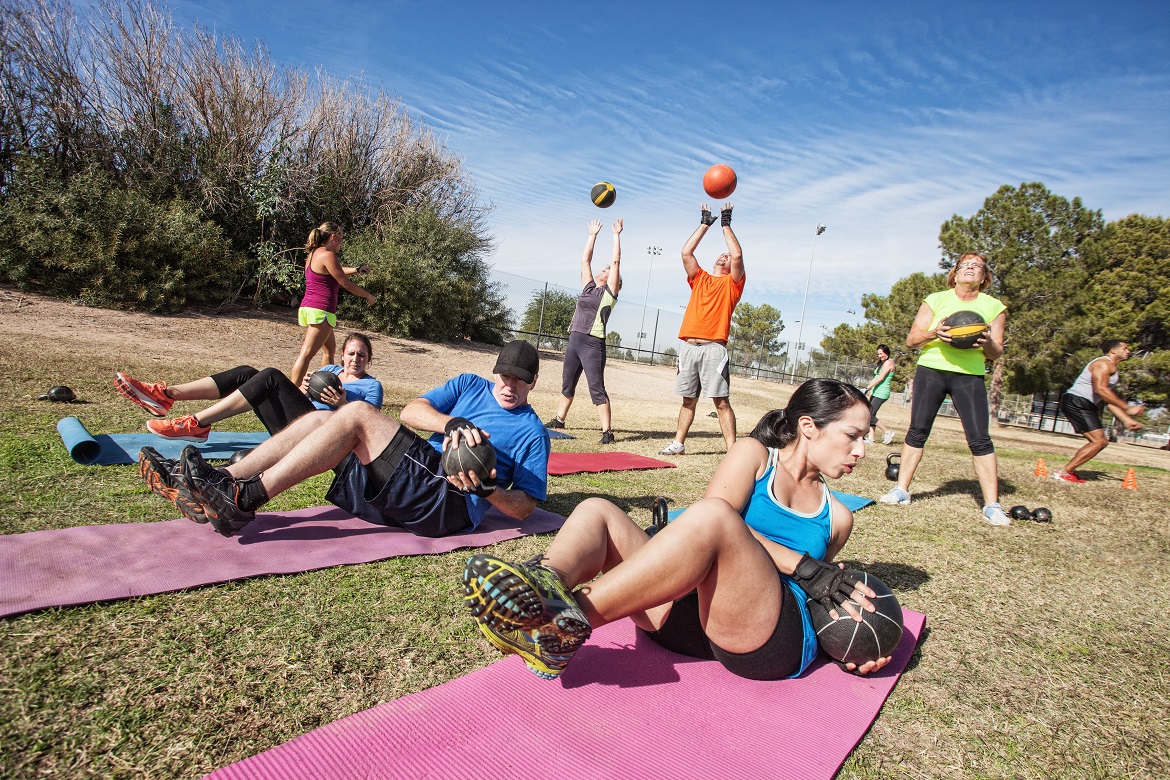
Words: Peter Reaburn
Muscle mass decreases as we get older resulting in a loss of muscle strength, power and endurance. Strength training can assist in slowing this process down. Over the past two decades, sport and exercise scientists have provided conclusive evidence of the positive physiological responses to strength training. Here are the top 10 reasons:
Adults who don’t strength train lose between 2.2kg and 3.2 kg of muscle every decade and this accelerates as we get older, even for those who train hard. Although endurance exercise improves our cardiovascular fitness and sprint training helps retain some muscle mass, it does not prevent muscle mass loss. Only strength exercise maintains our muscle mass, strength and power as we age.
Because muscle is a very active tissue, muscle loss is accompanied by a reduction in our resting metabolism. Research indicates that an average adult experiences a 2% to 5% reduction in metabolic rate every decade of life. Because regular strength exercise prevents muscle loss, it also prevents the accompanying decrease in resting metabolic rate.
Because most adults don’t strength train in the gym, they need to first replace the muscle tissue that has been lost through inactivity. Fortunately, research shows that a standard strength training program can increase muscle mass by about 1.4 kg over an eight-week training period. This is the typical training response for men and women who do 25 minutes of strength exercise three days a week.

Only strength exercise maintains our muscle mass, strength and power as we age
Research reveals that adding 1.2kg of muscle increases our resting metabolism by 7% and our daily energy needs by 15%. At rest, a kilogram of muscle requires 77 calories (323 kilojoules) per day for tissue maintenance. During exercise, muscle energy requirements increases dramatically. Adults who replace muscle through sensible strength training use more energy all day long, thereby reducing the likelihood of fat being stored.
In a 1994 study using older healthy people, strength training produced 1.8kg of fat loss after three months of training, even though the subjects were eating 15% more calories per day. The basic strength training program resulted in 1.4 kg more muscle, 1.8 kg less fat and 370 more calories per day food intake. All good news for masters athletes.
The effects of a progressive weight training program are similar for muscle tissue and bone tissue. The same training stimulus that increases muscle mass also increases bone density and bone mineral content.
Years of research on strength training and back pain conducted at the University of Florida Medical School have shown that strong lower back muscles are less likely to be injured than weaker ones. A recent study found that lower back patients had significantly less back pain after 1–2 weeks of specific (full range) strength exercise for the back muscles.

Combining strength and aerobic exercise is an effective means of lowering blood pressure
Strength training has been shown to reduce resting blood pressure significantly. A study revealed that combining strength and aerobic exercise is an even more effective means of lowering blood pressure, especially in those with blood pressures above 140/90 mm.
Researches have reported a 23% increase in glucose uptake after four months of strength training. Because poor glucose metabolism is associated with adult onset diabetes, improved glucose metabolism is an important benefit of regular strength exercise.
Although the effect of strength training on blood lipid levels needs further research, several studies have revealed improved blood lipid profiles after several weeks of strength exercise. It is important to note improvements in blood lipid levels are similar for both endurance and strength exercise. So, doing both forms of training has a greater effect.
Peter Reaburn is Professor and Head of Exercise & Sports Science within the Faculty of Health Science and Medicine at Bond University, specialising in masters sport. Learn more about Peter.
The 2018 Mastering Sport Symposium: Performance, Nutrition and Injury Considerations for Older Athletes will be held in conjunction with the Pan Pacific Masters Games and Sports Medicine Australia on Friday 2 and Saturday 3 November at Bond University. Visit masteringsportsymposium.com.au.